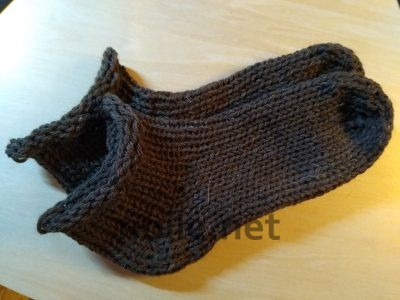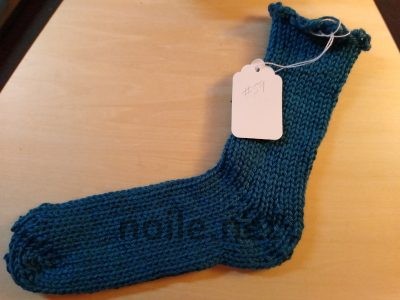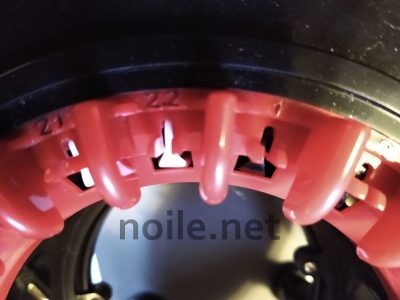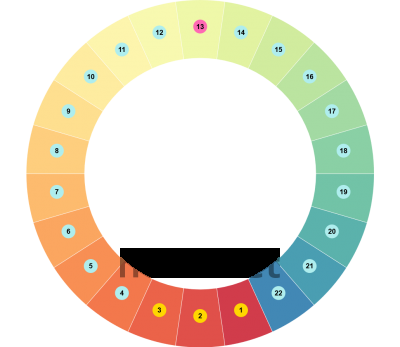The only thing I knew I wanted to make on my Addi Express was bed socks. It’s been quite a journey. The seventy-first and seventy-second casting-ons I did resulted in these:

Not exactly socks, but sock booties. They fit perfectly! And they’re a more-or-less adequate beginning attempt. (As I experimented, my samples got shorter and shorter.) These are knit from Lion Brand Fisherman’s Wool — proving that wool can, indeed, work on the Addi Express!
This was number 59, from Caron Soft Stitch:
 Uneven tension in the heel and toe, and one messy toe seam!
Uneven tension in the heel and toe, and one messy toe seam!
I approached learning how to knit socks on the Addi very methodically, by first practicing plain knitting in the round, then practicing making only heels, and then making only toes. Then I began to put the pieces together.
Here’s a pile of a few of the practice attempts I made while learning to do each step in the sock-making process:

It’s a lot! On the way, I learned all kinds of things about my Addi, so none of this experimentation was wasted.
If you, too, want to make socks, I suggest you begin by watching Sylvie Rasch’s video. This video suffers from one massive flaw — which I’ll address in a minute — but it is a helpful orientation to the process. I wouldn’t have gotten anywhere without it, in spite of the fact that using videos is actually very difficult for me.
Fairly early on, Rasch points out that the Addi Express has numbered needles. This is huge! Numbered needles let you see exactly where you are in the process . . . except that Rasch utterly fails to use those incredibly helpful reference numbers! Not only that, but at different times she calls the same needle number 1, or number 12, or number 2 . . . and when pointing, her digits often stray, or move in ways that don’t seem to correspond to the counting she is doing. All of which is confusing, at the very least. Confusion which would have been so easy to avoid!
 Even highlighted, the numbers are still a bit tricky to see.
Even highlighted, the numbers are still a bit tricky to see.
The English over-dubbing, and sub-titles, are helpful, but there’s a whole lot of German in the background that doesn’t correspond to the English, and explanations are incomplete in the English. Subtitles are available, but, as is usually the case, subtitles on craft videos effectively obscure the screen, so they are of minimal help here.
Admittedly, due to auditory disabilities, I have a very hard time — more than most people, for sure — with videos, which made this unusually difficult for me, personally, but these issues may make for complications for others, too. It took 76 tries before I finally nailed the directions for the socks. (I may be unusually stubborn, too.)
This video would be useful to EVERYONE if Rasch had only used a needle reference number every time she referred to a position on the loom! But she didn’t, so I was on my own. Figuring out the heel and toe was really tricky. I went down a lot of rabbit holes in the process — and dropped a lot of stitches.
You might do better, maybe even a lot better, but my guess is making socks using the video exclusively will be a struggle for nearly everyone.

That black bar doesn’t belong there.
Tech support is busy cat-wrangling and earning a living,
so it hasn’t been fixed yet.
I couldn’t have figured out what was going on without this fantastic wheel Mr. Noile conjured up for me — the numbers correspond to the needles on the Addi, and the center opposing needles are opposite each other. On the graphic, the black needles are yellow, and number 13, directly opposite black needle 2, is dark violet.
The result of all that plotting, and all that practice, is that I now have cue sheets, which I’ll publish as the next couple of posts. The cue sheets won’t tell you how to make a whole sock, but they will guide you through the steps, including needle numbers for the critical heel and toe shaping.
Additional Addi posts:
